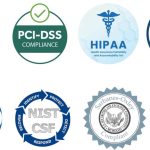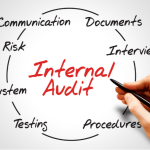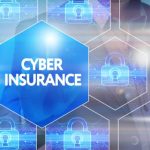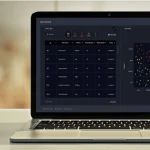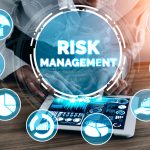• This paper presents a secure design framework for a digital application aimed at reducing procrastination, integrating risk management, threat modeling, and international data protection compliance• It applies standards like ISO/IEC 27001, NIST, OWASP MASVS, and GDPR to ensure confidentiality, integrity, and availability while addressing common cyber threats and … [Read more...] about Information Security Measures for a Procrastination Combatting Digital Solution
cybersecurity
Cybersecurity Governance Toolkit
• Cybersecurity governance in higher education aligns information security with institutional mission, protecting sensitive data and maintaining trust• Key components include risk management, policy development, compliance, training, incident response, and performance monitoring• A structured governance program, supported by frameworks like NIST or ISO, improves resilience, … [Read more...] about Cybersecurity Governance Toolkit
Quick Start Guide to Security Compliance
• Cybersecurity compliance affects nearly every business and IT provider, regardless of industry, due to expanding global regulations and contractual obligations• IT service providers must move beyond selling products to building holistic, risk-based security programs, with compliance serving as both a liability shield and revenue opportunity• Developing a strong cybersecurity … [Read more...] about Quick Start Guide to Security Compliance
Best Practices for Cybersecurity Compliance Monitoring
• Cybersecurity compliance monitoring is essential due to complex, overlapping regulations and increasing penalties for non-compliance• Effective monitoring starts with identifying applicable laws, conducting audits, and creating a tailored compliance plan based on risk assessments• Ongoing monitoring, automation, and employee training help maintain compliance and protect … [Read more...] about Best Practices for Cybersecurity Compliance Monitoring
ISO 27001 certification: What happens in the certification audit?
• ISO 27001 certification audits assess whether an organization’s Information Security Management System (ISMS) meets the standard’s requirements• The process includes a two-stage audit (documentation review and implementation review), optional readiness assessment, and post-audit monitoring• Audits identify non-conformities, guide corrective actions, and support continual … [Read more...] about ISO 27001 certification: What happens in the certification audit?
Implementing Technological Controls in ISO 27001
• ISO/IEC 27001:2022 includes 93 controls, with 34 categorized as technological, aimed at protecting information systems and enhancing resilience• Implementing these controls effectively requires risk assessment, contextual tailoring, and balancing security needs with usability and budget constraints• Benefits include regulatory compliance, automation of security processes, and … [Read more...] about Implementing Technological Controls in ISO 27001
Verizon 2025 Data Breach Investigations Report
• The 2025 Verizon DBIR shows cybercrime now operates like an integrated supply chain, linking infostealers, ransomware, access brokers, and malicious infrastructure• Vulnerability exploitation, especially of edge and VPN devices, has surged, while third-party involvement in breaches has doubled year-over-year• Leaked credentials, shadow AI tools, and poor secrets management … [Read more...] about Verizon 2025 Data Breach Investigations Report
CISOs rethink hiring to emphasize skills over degrees and experience
• Cybersecurity leaders are increasingly shifting from degree- and experience-based hiring to skills-based recruitment• Successful implementation requires intentional changes to job descriptions, interview processes, and collaboration with HR• Organizations using this approach report greater candidate diversity, stronger talent pipelines, and better hiring outcomes CISOs are … [Read more...] about CISOs rethink hiring to emphasize skills over degrees and experience
How CISOs Can Master Operational Control Assurance — And Why It Matters
• Dynamic operational control assurance helps CISOs manage risk and compliance in complex cloud and development environments• The approach integrates OSCAL, compliance as code, and AI to provide real-time visibility and proactive threat response• It enables consistent enforcement of security standards from development through deployment, improving legal defensibility and … [Read more...] about How CISOs Can Master Operational Control Assurance — And Why It Matters
How cybersecurity is crucial to the insurance industry
• This is a case history of how a large U.S. property and casualty insurer, "SecureInsure," is responding to escalating cybersecurity threats in 2025• The insurance sector handles vast volumes of sensitive structured and unstructured data, making it an attractive target for ransomware, supply chain breaches, and AI-driven attacks• SecureInsure is strengthening its cybersecurity … [Read more...] about How cybersecurity is crucial to the insurance industry
Does non-compliance in tech really matter?
• Compliance requirements like SOC 2 and ISO 27001 can be time-consuming and disruptive but are often necessary for securing business, meeting regulatory demands, and avoiding legal or financial penalties• The importance of compliance depends heavily on industry, with sectors like finance, healthcare, and operational technology (OT) treating it as mission-critical• Compliance … [Read more...] about Does non-compliance in tech really matter?
PCI DSS Future-Dated Controls: 7 Critical Changes that Will Shape Your Security Strategy
• PCI DSS 4.0.1 introduces 51 future-dated security controls that will become mandatory on March 31, 2025, requiring updates to password policies, multi-factor authentication (MFA), and payment page integrity.• Organizations must transition to longer, more secure passwords or adopt password-less authentication, eliminate hard-coded credentials, and implement script and … [Read more...] about PCI DSS Future-Dated Controls: 7 Critical Changes that Will Shape Your Security Strategy
Cybersecurity checklists and tools for small firms
• Small firms face unique cybersecurity threats and operational challenges due to limited staff, resources, and technical expertise, requiring tailored frameworks for protection, detection, and recovery.• A structured checklist aligned with the NIST Cybersecurity Framework helps firms assess risks, identify vulnerabilities, and establish controls across areas such as … [Read more...] about Cybersecurity checklists and tools for small firms
Managing the Costs of Cybersecurity Risk Management
• Cybersecurity costs can be effectively analyzed using a quality cost model that classifies spending into prevention, appraisal, internal failures, and external failures.• The NIST Cybersecurity Framework (CSF) serves as a basis for linking cybersecurity operations to cost categories, enabling clearer tracking and improvement.• Mapping NIST CSF subcategories to quality cost … [Read more...] about Managing the Costs of Cybersecurity Risk Management
State of Privacy 2025
• Privacy team sizes have declined, but perceptions of understaffing have improved due to increased use of AI and more qualified applicants.• Enterprises that consistently practice privacy by design report stronger board support, better resource allocation, and greater confidence in privacy compliance.• Major challenges include complex global regulations, skills gaps in … [Read more...] about State of Privacy 2025
Compliance Does Equal Security – Just Not The Elimination of Risk
The popular phrase “compliance doesn’t equal security” reflects real shortcomings in the cybersecurity industry’s reliance on frameworks that are often outdated, static, and misaligned with modern software development practices. Many compliance programs remain rooted in document-based assessments and point-in-time audits, even as threat actors evolve rapidly and software … [Read more...] about Compliance Does Equal Security – Just Not The Elimination of Risk
MITRE releases enhanced EMB3D Threat Model
MITRE has publicly released the enhanced EMB3D Threat Model, a comprehensive framework for identifying, understanding, and mitigating threats to embedded devices used in critical infrastructure, industrial systems, IoT, automotive, and healthcare. A major advancement of this release is the inclusion of tiered mitigation guidance—categorized as Foundational, Intermediate, and … [Read more...] about MITRE releases enhanced EMB3D Threat Model
“Where Are We On Cyber?” – A Qualitative Study On Boards’ Cybersecurity Risk Decision Making
This qualitative study explored how cybersecurity risk is perceived and handled at the board level in some of the UK’s largest organizations. Through interviews with 18 C-level executives, CISOs, non-executive directors (NEDs), and consultants, researchers found that while cybersecurity is increasingly present on board agendas, it is commonly reduced to financial … [Read more...] about “Where Are We On Cyber?” – A Qualitative Study On Boards’ Cybersecurity Risk Decision Making
All Things Internal Audit Tech: Identity & Access Management
In this podcast, host Bill Truett speaks with cybersecurity expert Nick Lasenko to explore the vital role of Identity and Access Management (IAM) in today’s threat landscape. Lasenko emphasizes that nearly all cyber incidents—including costly data breaches—stem from unauthorized access, making IAM not just a technical necessity but a business-critical function. Drawing on … [Read more...] about All Things Internal Audit Tech: Identity & Access Management
What is Continuous Threat Exposure Management?
As cyber threats become more sophisticated and attack surfaces expand, traditional periodic vulnerability scans and reactive responses no longer suffice. Continuous Threat Exposure Management (CTEM) and broader exposure management offer a unified, proactive strategy for identifying and reducing organizational risk in real time. Developed from Gartner’s CTEM framework, this … [Read more...] about What is Continuous Threat Exposure Management?




